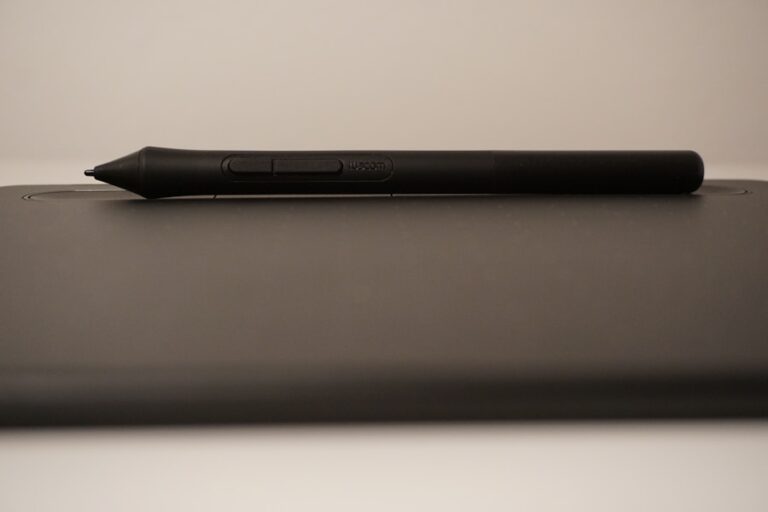Beyond Brushes and Paints: Uncovering the True Meaning and Potential of Digital Art
Digital art has come a long way since its humble beginnings in the 1960s. It all started with simple pixelated images and basic computer graphics, but over the years, it has evolved into a sophisticated and diverse form of artistic expression. The early days of digital art were characterized by limited technology and capabilities, but as computers and software became more advanced, artists were able to push the boundaries of what was possible. Today, digital art encompasses a wide range of mediums, including digital painting, 3D modeling, animation, and interactive installations. The evolution of digital art has been driven by the rapid advancements in technology, which have allowed artists to create high-tech masterpieces that were once unimaginable.
The journey of digital art has been marked by innovation and experimentation, as artists continue to explore new techniques and tools to push the boundaries of creativity. From the early days of pixel art to the rise of virtual reality and augmented reality, digital art has continuously evolved to embrace the latest technological advancements. The use of digital tools and software has revolutionized the way artists create and manipulate images, allowing for greater precision and control over the creative process. As a result, digital art has become a powerful medium for artistic expression, offering endless possibilities for artists to bring their visions to life in ways that were previously impossible.
Exploring the Boundless Possibilities of Digital Tools and Techniques in Art Creation
The advent of digital tools and techniques has opened up a world of possibilities for artists, allowing them to experiment with new mediums and styles that were previously inaccessible. Digital painting, for example, has revolutionized the way artists approach traditional painting, offering a wide range of brushes, textures, and effects that can be applied with precision and ease. 3D modeling has also become a popular medium for artists, allowing them to create intricate and lifelike sculptures and environments that would be impossible to achieve with traditional methods. Additionally, animation has become a powerful tool for storytelling and visual communication, allowing artists to bring their creations to life in dynamic and engaging ways.
The use of digital tools and techniques has also democratized the art world, making it more accessible to a wider audience. With the rise of digital art software and online platforms, artists are able to share their work with people from all over the world, breaking down geographical barriers and reaching new audiences. This has led to a greater diversity of artistic voices and styles, as artists from different backgrounds and cultures are able to connect and collaborate in ways that were previously impossible. The boundless possibilities of digital tools and techniques have empowered artists to explore new creative horizons and push the boundaries of what is possible in art creation.
The Intersection of Traditional Art and Digital Art: Bridging the Gap Between the Old and the New
The intersection of traditional art and digital art has sparked a rich dialogue between the old and the new, as artists explore ways to bridge the gap between these two distinct forms of artistic expression. While traditional art forms such as painting, sculpture, and drawing have been practiced for centuries, digital art offers a fresh perspective on these age-old mediums. Many artists have embraced digital tools and techniques as a way to enhance their traditional practices, using them to experiment with new styles and approaches that would be impossible with traditional methods alone. This has led to a renaissance of sorts in the art world, as artists blend the old with the new to create innovative and compelling works of art.
The intersection of traditional art and digital art has also challenged long-held notions of what constitutes “real” art, as digital creations are often met with skepticism and criticism from traditionalists. However, as digital art continues to gain recognition and acceptance in the art world, it has become clear that it is a legitimate and significant form of artistic expression. Rather than replacing traditional art forms, digital art has enriched the artistic landscape by offering new perspectives and possibilities for creative expression. The intersection of traditional art and digital art has sparked a renaissance in the art world, as artists embrace new technologies while honoring the rich traditions of the past.
The Impact of Digital Art on the Art World: Redefining Creativity and Innovation
The impact of digital art on the art world has been profound, redefining creativity and innovation in ways that were previously unimaginable. Digital art has challenged traditional notions of what constitutes “art,” expanding the boundaries of creativity and pushing the limits of artistic expression. With the rise of digital tools and techniques, artists are able to create works that are dynamic, interactive, and immersive, offering new ways for audiences to engage with art. This has led to a renaissance in the art world, as artists embrace new technologies while honoring the rich traditions of the past.
Digital art has also had a democratizing effect on the art world, making it more accessible to a wider audience. With the rise of digital art software and online platforms, artists are able to share their work with people from all over the world, breaking down geographical barriers and reaching new audiences. This has led to a greater diversity of artistic voices and styles, as artists from different backgrounds and cultures are able to connect and collaborate in ways that were previously impossible. The impact of digital art on the art world has been profound, redefining creativity and innovation in ways that were previously unimaginable.
Digital Art as a Platform for Social and Political Commentary: Harnessing the Power of Visual Communication
Digital art has emerged as a powerful platform for social and political commentary, harnessing the power of visual communication to address pressing issues and provoke meaningful dialogue. With its ability to reach wide audiences through online platforms and social media, digital art has become an effective tool for raising awareness about social injustices, political corruption, environmental crises, and other pressing issues. Artists are able to use their creations to convey powerful messages that resonate with viewers on a deep emotional level, sparking conversations and inspiring action. This has led to a renaissance in the art world, as artists embrace new technologies while honoring the rich traditions of the past.
The intersection of traditional art and digital art has also challenged long-held notions of what constitutes “real” art, as digital creations are often met with skepticism and criticism from traditionalists. However, as digital art continues to gain recognition and acceptance in the art world, it has become clear that it is a legitimate and significant form of artistic expression. Rather than replacing traditional art forms, digital art has enriched the artistic landscape by offering new perspectives and possibilities for creative expression. The intersection of traditional art and digital art has sparked a renaissance in the art world, as artists embrace new technologies while honoring the rich traditions of the past.
The Future of Digital Art: Embracing Technological Advancements and Pushing the Boundaries of Creativity
As technology continues to advance at an unprecedented pace, the future of digital art holds endless possibilities for innovation and creativity. With the rise of virtual reality (VR), augmented reality (AR), artificial intelligence (AI), and other cutting-edge technologies, artists are able to create immersive experiences that blur the lines between physical and digital worlds. This has opened up new frontiers for artistic expression, allowing artists to push the boundaries of what is possible in terms of storytelling, visual communication, and interactive experiences. The future of digital art is one that embraces technological advancements while pushing the limits of creativity in ways that were previously unimaginable.
The future of digital art also holds promise for greater collaboration and connectivity within the global artistic community. With online platforms and social media enabling artists to connect with audiences from all over the world, there is potential for greater diversity of voices and styles in the art world. This will lead to a renaissance in the art world, as artists embrace new technologies while honoring the rich traditions of the past.
The Importance of Recognizing and Valuing Digital Art as a Legitimate and Significant Form of Artistic Expression
In conclusion, it is crucial for society to recognize and value digital art as a legitimate and significant form of artistic expression. Digital art has revolutionized the way artists create and share their work, offering endless possibilities for creativity and innovation. By embracing new technologies while honoring traditional practices, artists are able to push the boundaries of what is possible in terms of storytelling, visual communication, and interactive experiences.
The impact of digital art on society cannot be overstated; it has become a powerful platform for social and political commentary, raising awareness about pressing issues through visual communication. As technology continues to advance at an unprecedented pace, the future of digital art holds endless possibilities for innovation and creativity. It is crucial for society to recognize and value digital art as a legitimate form of artistic expression that enriches our cultural landscape. By embracing new technologies while honoring traditional practices, artists are able to push the boundaries of what is possible in terms of storytelling, visual communication, and interactive experiences. The future holds promise for greater collaboration and connectivity within the global artistic community.
In conclusion, it is crucial for society to recognize and value digital art as a legitimate form of artistic expression that enriches our cultural landscape. By embracing new technologies while honoring traditional practices, artists are able to push the boundaries of what is possible in terms of storytelling, visual communication, and interactive experiences. The future holds promise for greater collaboration and connectivity within the global artistic community.





